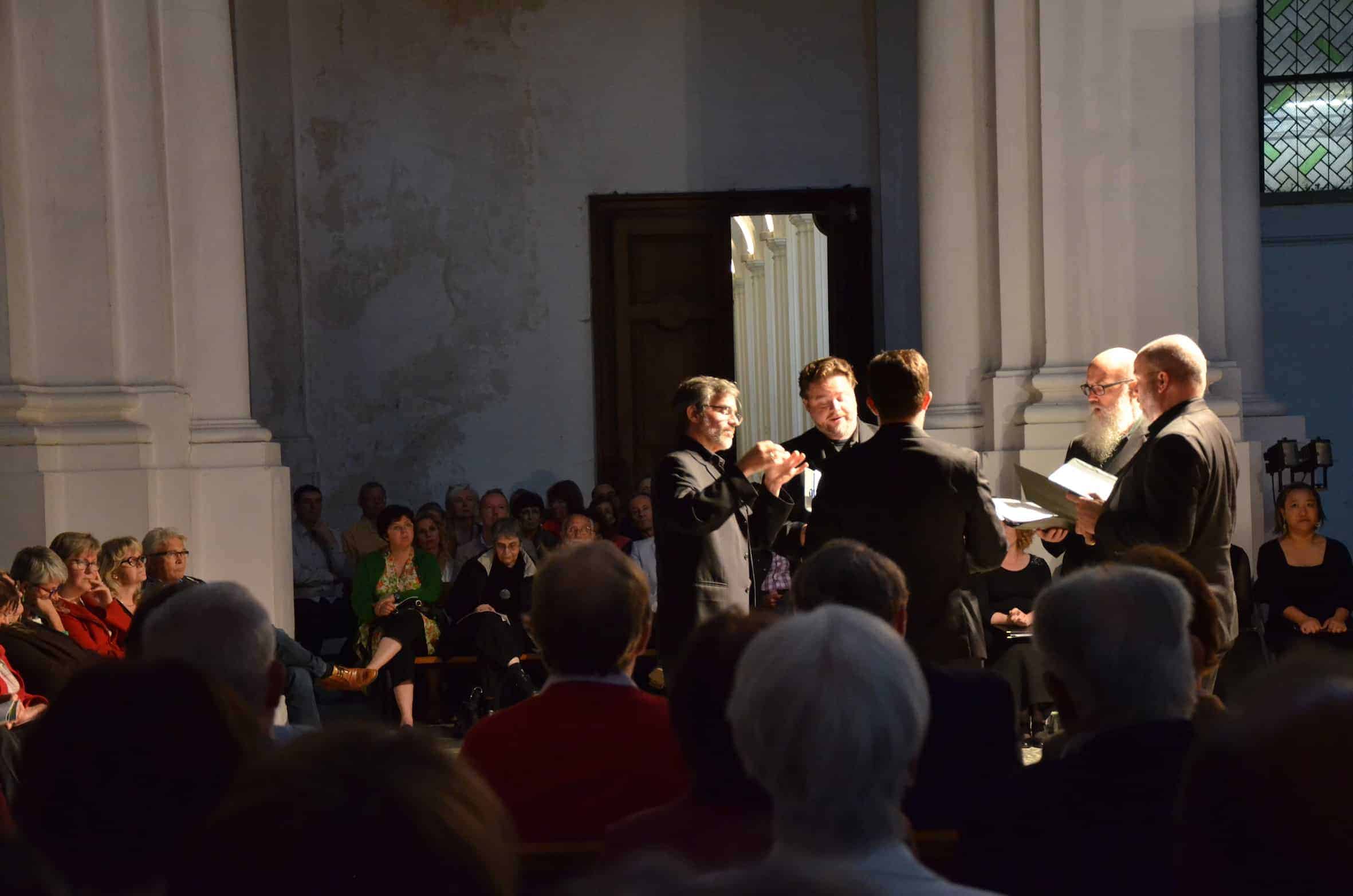Many thanks to Kerry McCarthy for translating this wonderful review from Crescendo Magazine! Click here to read the original review.
Festival de Namur: Time Travel With Cappella Romana
By Aline Giaux, IMEP reporter
Cappella Romana: Cyprus, dir. Alexander Lingas
Cappella Romana gave an extraordinary concert this Monday, July 4, at the Namur Festival. This chamber ensemble from the west coast of the United States (Portland, Oregon) offered a selection of medieval and renaissance Cypriot music, combining the polyphonic Christian songs of the Greek East and the Latin West. These specialists in their field highlighted the creative richness of the era as well as the diversity of Orthodox and Catholic music. The program was a joy for musicologists and sparked the interest of all through the magic of the surroundings and the performance. Since these chants require more reverberant acoustics than that of the church of Saint-Loup in Namur, the festival relocated temporarily to the abbey church of Floreffe. The room was set up so that the listeners were turned toward the back of the church, where they could see part of the Chagall exhibition (which continues until October 2.) In this way, they were able to benefit from both a large acoustical space and an intimate physical space.
Although the program was very specialized, it was anything but monotonous. On the contrary, it took us by the hand and plunged us into a universe which we would never have imagined to be so interesting. The vocal drone, steady and mesmerizing, seemed to perfume the air with incense and myrrh as complex and ornamented phrases rubbed against it. The voices mingled and rejoined, often in a stunning fashion. The most puzzling detail for the modern ear was doubtless the use of an unequal temperament, creating harmonic colors that are rarely heard nowadays. Recall that equal temperament, the division of the octave into 12 equal semitones, did not become popular until the baroque era, simplifying the tuning of certain instruments but leading to the loss of the “colors” specific to each tonality. The ten singers, with their rich and firmly anchored timbre, showed great expertise in sustaining a completely a cappella concert, with a beautiful cohesion at the heart of the group and a presence which kept the audience holding their breath until the end. A discovery we will not forget.
Cappella Romana will return to Liège for the Nuits de Septembre with their program “Venice in the East” (on September 3 at the Church of St. Denis.)


You must be logged in to post a comment.